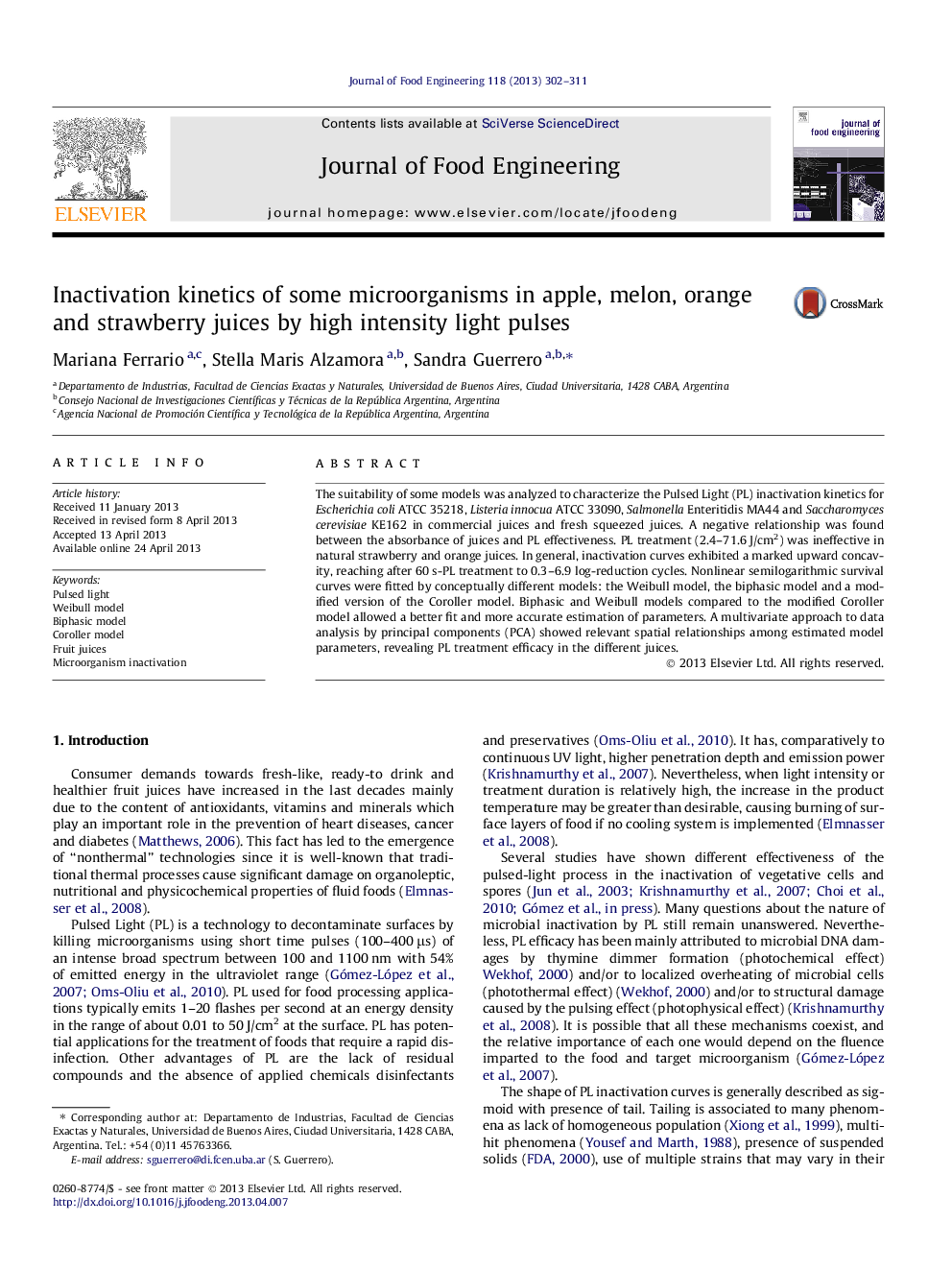| Article ID | Journal | Published Year | Pages | File Type |
|---|---|---|---|---|
| 223368 | Journal of Food Engineering | 2013 | 10 Pages |
•Microbial inactivation in fruit juices treated with pulsed light was studied in this work.•The inactivation depended on the microorganism, type and source of fruit juice.•As juice absorbance in the UV region increased treatment effectiveness decreased.•Suitability of three models was analyzed to characterize pulsed light inactivation.•Weibull and biphasic models allowed a good fit and an accurate estimation of parameters.
The suitability of some models was analyzed to characterize the Pulsed Light (PL) inactivation kinetics for Escherichia coli ATCC 35218, Listeria innocua ATCC 33090, Salmonella Enteritidis MA44 and Saccharomyces cerevisiae KE162 in commercial juices and fresh squeezed juices. A negative relationship was found between the absorbance of juices and PL effectiveness. PL treatment (2.4–71.6 J/cm2) was ineffective in natural strawberry and orange juices. In general, inactivation curves exhibited a marked upward concavity, reaching after 60 s-PL treatment to 0.3–6.9 log-reduction cycles. Nonlinear semilogarithmic survival curves were fitted by conceptually different models: the Weibull model, the biphasic model and a modified version of the Coroller model. Biphasic and Weibull models compared to the modified Coroller model allowed a better fit and more accurate estimation of parameters. A multivariate approach to data analysis by principal components (PCA) showed relevant spatial relationships among estimated model parameters, revealing PL treatment efficacy in the different juices.
